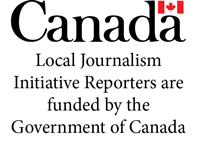While the major political parties have been busy trying to promise their way into government, sadly no one is talking about the most important economic issue facing Canada today, a severe shortage of labour. It does not matter what industry – white collar, blue collar, or jobs where you don’t need a collar – all are desperate for people to show up and work.
Contrary to what your crusty Uncle Bob says, there is no legion of lazy folk sitting on their couch collecting CERB that would be ready to work if the government just stopped the handouts. With the exception of April 2020 at the height of the first lockdown, labour force participation has stayed within historical seasonal trends as per Statistics Canada, while unemployment rates have returned close to pre-pandemic levels.
Local unemployment rates have dropped back below four per cent, demonstrating acute labour shortages across the area.
While national childcare would be an excellent first step to boost labour force participation and provide an influx of new labour, it still does not solve the fact that fertility rates declined significantly from 1960-75 before leveling out in the 1980s at levels similar to present day of 1.53. Considering that we are only now seeing the first significant wave of Baby Boomers, born prior to the decline in birth rates and now exiting the workforce, this is a problem that is about to get a lot worse. Over the coming decade, we are set to lose the bulk of a generation that currently makes up over 29 per cent of the Canadian population from the national workforce.
There are only two ways to increase the labour pool: drastically increase birth rates and wait 20 years, or increase immigration efforts. Considering it is unlikely that we buck the global trend of declining birth rates and everyone starts cracking out four kids again, that leaves looking out into the world for solutions. Lucky for us, Canada is still a preferred destination for people outside our borders and we have a window of time to recruit the people we need before immigrants become scarce.
Similar to Clifford Sifton and Wilfred Laurier over a century ago, Canada needs to capitalize on the fact that we have the natural resources to support a population more than three times our current one. The Sifton Plan (which at the time was criticized for not bringing ‘the right people’ to the Prairies) is summed up well in this quote from Sifton which was from a statement to the House of Commons in 1899:
“I do not care what language a man speaks, or what religion he professes, if he is honest and law-abiding, if he will go on that land and make a living for himself and his family, he is a desirable settler for the Dominion of Canada… If we can find people willing to obey the laws and pay taxes for the support of our institutions, we must open our doors to these people and give them such encouragement as will overcome the initial difficulties of their change of situation.”
This quote, with a little modern modification dropping the ‘he’ for ‘they,’ still rings true today. We will need a legion of new people to replace retiring Baby Boomers in the coming decade and as long as they are willing to work and pay taxes, the door should be wide open. The Baby Boom was a phenomena across the western world and many countries are going to find themselves in a demographic time bomb. The developed countries that recognize this issue earliest will have the most success mitigating; those that wait for the problem to materialize will find themselves in the unenviable position of trying to handle increased public health care costs in a contracting economy.
It’s time we tackle the problem and capitalize on the fact that Canada is a great country that many would drop everything just for the chance at making a better life for their family.
A vote always counts
Many a voter in ridings like Perth-Wellington will lament that their vote doesn’t matter… whether it is a progressive in rural Ontario or conservative in downtown Toronto. When it comes to how the 338 seats are allocated on Sept. 20, there are over 200 races that were decided before the election campaign kicked off. But what of future elections?
If you find yourself feeling like your vote doesn’t matter and you are thinking that you may as well stay home, perhaps you are unaware that how you vote today can have an impact on future elections. Like most organizations, local riding associations are powered by two things, volunteers and money. Did you know that your vote can help fund things down the road, empowering the association that you may identify with so that they can be more competitive in the future?
Before you decide to sit this vote out, think about this. As per Elections Canada, if a candidate gets at least 10 per cent of the vote in the riding, their campaign is reimbursed for 60 per cent of the eligible campaign expenses from the public purse. There is no such thing as a wasted vote if a vote is cast; the only wasted votes are those who don’t value civic duty and are too lazy to cast a ballot.
***
Stewart Skinner is a local business owner, former political candidate, and has worked at Queen’s Park as a Policy Advisor to the Minister of Agriculture, Food, and Rural Affairs. He can be reached at stewart@stonaleenfarms.ca or on Twitter: @modernfarmer.



